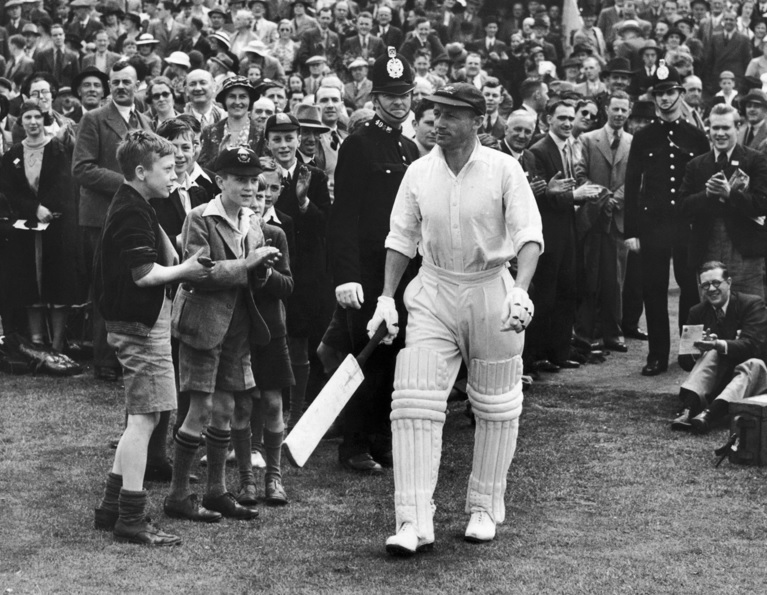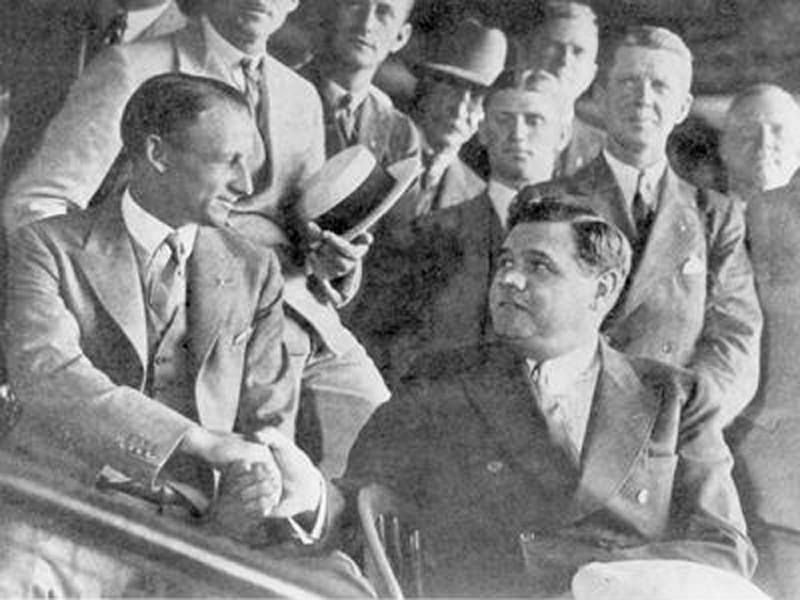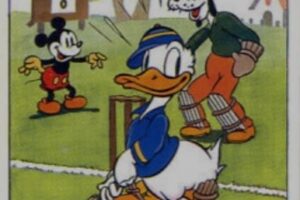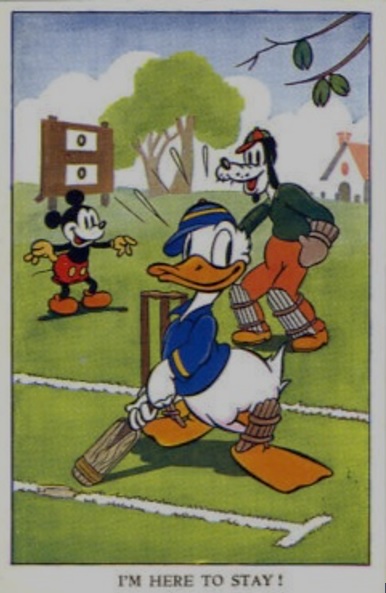Donald Bradman is widely regarded as the greatest cricketer of all time, though comparing athletes across eras is always complicated. Just as it’s difficult to fairly compare Babe Ruth to modern baseball players—especially given that Black athletes were excluded from the Major Leagues during his time—it’s hard to measure Bradman against today’s cricketers under vastly different conditions. Similarly, debates about whether Michael Jordan or LeBron James is the true basketball GOAT show how context shapes legacy. Still, despite the challenges of cross-era comparisons, Bradman’s dominance in his time is undeniable, and his place among the all-time greats is secure.
The Career of Donald Bradman
Born in 1908, Donald Bradman lived a full 92 years, passing away in 2001 after witnessing a century of change both on and off the cricket field. His career spanned iconic moments, including the controversial Bodyline series of the early 1930s—a tactic designed specifically to curb his dominance, and still discussed today. Beyond the boundary, Bradman also played a principled role in cricket’s global politics, voicing opposition to apartheid in the 1970s and contributing to South Africa’s exclusion from the ICC until the regime collapsed in the early 1990s.
At just 5’7″, Bradman didn’t cut an imposing figure, but his presence at the crease struck fear into bowlers around the world. Over his career, he amassed 146 centuries in first-class and Test cricket combined, including an astonishing unbeaten 452 in a 1930 match—a score cut short only because his team had already secured victory. Bradman’s consistency, precision, and mental sharpness made him a singular force in the game, setting standards that remain virtually untouchable.
The Legacy of Donald Bradman
Sir Donald Bradman’s cricketing record is unmatched in the history of the sport. Across 52 Test matches for Australia between 1928 and 1948, Bradman amassed 6,996 runs at a staggering average of 99.94—the highest ever in Test cricket by a wide margin. He scored 29 Test centuries, including 12 double hundreds and two triple centuries, with his highest being 334 against England in 1930. Remarkably, he reached 1,000 Test runs in just 13 innings, a record that still stands. Domestically, he was equally dominant, scoring 28,067 first-class runs at an average of 95.14, with 117 centuries to his name.
Bradman’s 1930 Ashes tour of England was a turning point in cricket history. He scored 974 runs in five Tests—still the most by any player in a single series. His dominance forced the English to devise the controversial “Bodyline” tactic during the 1932–33 series in a desperate bid to contain him. Despite the interruptions of World War II, Bradman returned to the game and captained Australia in the legendary “Invincibles” tour of England in 1948, where his team went unbeaten. His career ended famously with a duck in his final innings, leaving him just four runs shy of a perfect average of 100.
Donald Bradman Tours North America
In 1932, Canadian businessman Arthur Mailey teamed up with his American friend Foxy Dean to organize a North American tour for the Australian cricket team. But there was one non-negotiable condition: Donald Bradman had to be part of the squad. Promoted as “The Babe Ruth of Cricket” to attract American audiences, Bradman agreed to join under a few clear terms—his travel had to be fully paid, his salary for missing the England series reimbursed, and his new wife invited along at the promoters’ expense. In effect, it doubled as a honeymoon. Given Bradman’s star power, the organizers quickly agreed.
The tour spanned 51 matches across Canada and the United States, with Australia winning 43 of them; the remainder were drawn, though some sources claim they may have dropped one game. Regardless, the team officially went unbeaten. The Australians didn’t treat the matches with Test-level intensity, but they were still dominant. One of the most memorable stops came in Hollywood in August, where they played a light-hearted match against a team of film stars that included Clark Gable, Boris Karloff, and former England captain–turned–actor C. Aubrey Smith. It became the most talked-about and entertaining leg of the entire tour.

Donald Bradman Meets the Babe
The New York leg of the tour wrapped up on July 19th with a celebration at the New York Athletic Club. The next day, the Australian players enjoyed a Yankees vs. White Sox game at Yankee Stadium. Sitting in the box seats was Donald Bradman—alongside none other than Babe Ruth himself. The two sports icons spent the game talking and struck up a friendly rapport. Bradman was amazed by how short a baseball game was compared to cricket, which at the time had no T20 equivalent. Ruth, meanwhile, was fascinated to learn that in cricket, if you hit the ball out of the ground, you didn’t even need to run to earn your score.
Several memorable incidents marked that tour. In a New York match against a team of West Indian immigrants, 54-year-old Aussie wicketkeeper Sammy Carter was struck in the eye by a delivery and lost sight in that eye—one of the tour’s most serious injuries. But it was during the same match at Innisfail Park (now Gaelic Park) on July 16 that history was made.
Donald Bradman, batting at number three, was dismissed for a duck. The bowler is recorded only as “B. Clarke,” with the catch taken by a player named “V. Ollivierre.” Both players’ first names have been lost to time. Clarke’s moment of glory didn’t go unnoticed to the elated patrons. He reportedly ran laps around the field collecting money in his cap from a thrilled crowd. Considering Bradman registered only seven ducks in his entire international career, Clarke’s achievement was extraordinary. This monumental event is made even more interesting by the fact that Bradman’s very first duck had also come against a West Indian, Herman Griffith, in 1931.

How Donald Duck Got His Name
The dismissal became a headline-grabbing story across the U.S. Press coverage stretched coast to coast, with cricket—briefly—becoming front-page news. The story even reached Hollywood, where Walt Disney, reportedly inspired by the tale of Bradman’s duck in New York, was working on a new character to complement Mickey Mouse. In the summer of 1932, Walt Disney was reportedly listening to a radio broadcast when he heard that Australian cricket star Donald Bradman had been dismissed for a duck during a match in New York. Struck by the alliteration and irony, Disney jotted down a potential name for a new character he was developing.
That character would debut in The Wise Little Hen in 1934, and his name—fittingly—was Donald Duck. Disney is said to have encountered the Australian team just weeks after the famous dismissal, when they arrived in Hollywood later in August 1932. Whether the inspiration was direct or coincidence, the timing lined up—and the name stuck. The rest, as Hollywood likes to say, is history.
Read about the Disastrous Cricket Tournament at the 1900 Olympic Games
Among the many sins of the 1900 Games was one specific disaster in particular. This farce would keep the world’s second most popular sport out of the global phenomenon for one hundred and twenty-eight consecutive years. Read about the nightmare of Cricket at the 1900 Olympic Games here.







